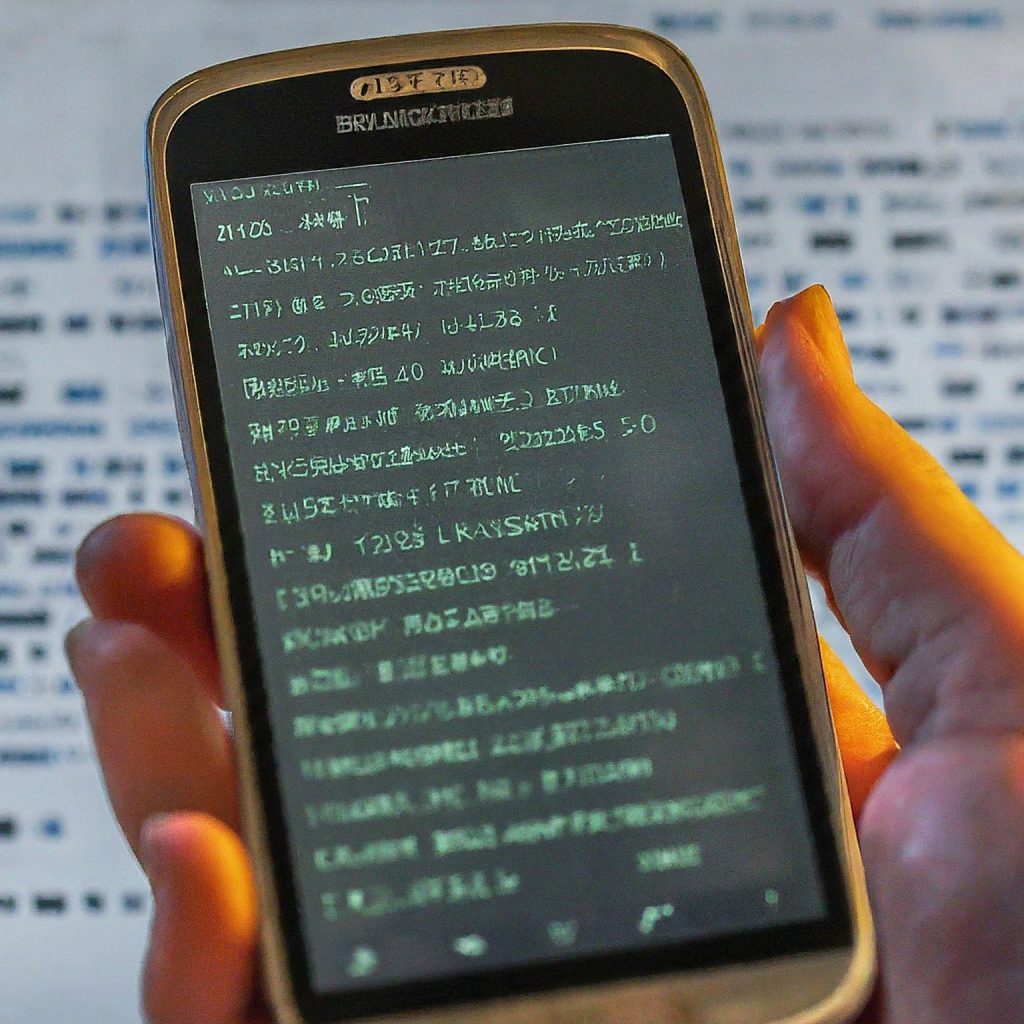In the age of digital communication, mysterious text messages have become a common occurrence. While most text messages are mundane and predictable, some arrive out of the blue, carrying cryptic messages or unfamiliar codes. This comprehensive guide will delve into the intriguing world of these messages, exploring their potential origins, the psychology behind their appeal, and the precautions you should take when encountering them.

The Allure of the Unknown: Why Mysterious Text Messages Captivate Us
Mysterious text messages hold a certain allure, piquing our curiosity and triggering a desire to decode their hidden meaning. This fascination stems from several psychological factors:
- The Zeigarnik Effect: This psychological phenomenon states that unfinished or interrupted tasks tend to linger in our minds more than completed ones. A mysterious text message, with its incomplete information and uncertain origin, creates a sense of unfinished business, compelling us to seek resolution.
- Pattern Recognition: Humans are inherently wired to seek patterns and meaning in the world around us. A cryptic text message presents a puzzle that our brains are eager to solve, leading us down a rabbit hole of speculation and interpretation.
- Curiosity and Intrigue: The element of surprise and uncertainty associated with mysterious text messages triggers our natural curiosity. We are drawn to the unknown and crave information to fill the gaps in our knowledge.
The Origins of Mysterious Text Messages: Who’s Behind the Curtain?
Mysterious text messages can originate from various sources, each with its own motivations and implications:
- Wrong Number: A simple misdial or typo can lead to a message landing on the wrong phone. These messages are often harmless, but they can still be confusing or even alarming if the content is personal or sensitive.
- Spam and Scams: Unfortunately, scammers and spammers often use mysterious text messages as bait to lure unsuspecting victims. These messages may contain phishing links, fraudulent offers, or requests for personal information.
- Marketing Campaigns: Some companies employ cryptic messages as part of a marketing strategy to create buzz and curiosity around their products or services. These messages typically lead to a website or social media page where the mystery is revealed.
- Pranksters and Trolls: In some cases, mysterious text messages are simply the work of pranksters or trolls who enjoy sowing confusion and chaos. These messages are usually harmless but can be annoying and disruptive.
- Cryptic Communication: Occasionally, individuals might use cryptic language in text messages to maintain privacy or add an element of intrigue to their communication. This is often seen in romantic relationships or among close friends who share inside jokes or coded language.
Decoding Mysterious Text Messages: Tips and Tools
If you receive a mysterious text message, don’t panic. Instead, take a step back and assess the situation before taking any action. Here are some tips to help you decipher the message and determine its origin:
- Analyze the Content: Carefully examine the message for any clues about its purpose or sender. Look for keywords, phrases, or patterns that might offer insights.
- Check the Number: If the number is unfamiliar, use online search engines or reverse phone lookup tools to try and identify the sender.
- Avoid Engaging: If the message seems suspicious, avoid replying or clicking on any links. Engaging with scammers or spammers can lead to unwanted consequences.
- Block the Number: If you continue to receive unwanted or harassing messages, block the number to prevent further communication.
- Report Spam: If you suspect the message is spam or a scam, report it to your carrier or the appropriate authorities.
The Dark Side of Mysterious Text Messages: Beware of Scams and Risks
While some mysterious text messages are harmless or even amusing, others can pose serious risks to your privacy, security, and financial well-being. Here are some common scams to be aware of:
- Phishing Scams: These messages attempt to trick you into revealing sensitive information like passwords, credit card numbers, or social security numbers by posing as a legitimate company or institution.
- Malware Links: These messages may contain links that, when clicked, download malware onto your device, compromising its security and potentially exposing your data.
- Premium Rate Scams: These messages lure you into replying to them, resulting in exorbitant charges on your phone bill.
- Romance Scams: These messages prey on vulnerable individuals seeking companionship, building false relationships to extract money or personal information.
Protecting Yourself: Best Practices for Handling Mysterious Text Messages
To minimize the risks associated with mysterious text messages, follow these best practices:
- Be Skeptical: Don’t trust messages from unknown senders, especially if they ask for personal information or urge you to take immediate action.
- Verify the Sender: If you’re unsure about the legitimacy of a message, try to verify the sender’s identity through official channels.
- Ignore and Delete: If the message seems suspicious, simply ignore it and delete it.
- Update Your Software: Keep your phone’s operating system and security software up to date to protect against malware.
- Use Strong Passwords: Create strong, unique passwords for your online accounts and enable two-factor authentication whenever possible.
- Report Suspicious Activity: If you receive a scam or phishing message, report it to your carrier or the relevant authorities.
The Future of Mysterious Text Messages: A Shifting Landscape
The landscape of mysterious text messages is constantly evolving. As technology advances, scammers and spammers are becoming more sophisticated in their tactics. However, with increased awareness, education, and vigilance, we can collectively combat these threats and create a safer and more secure mobile communication environment.